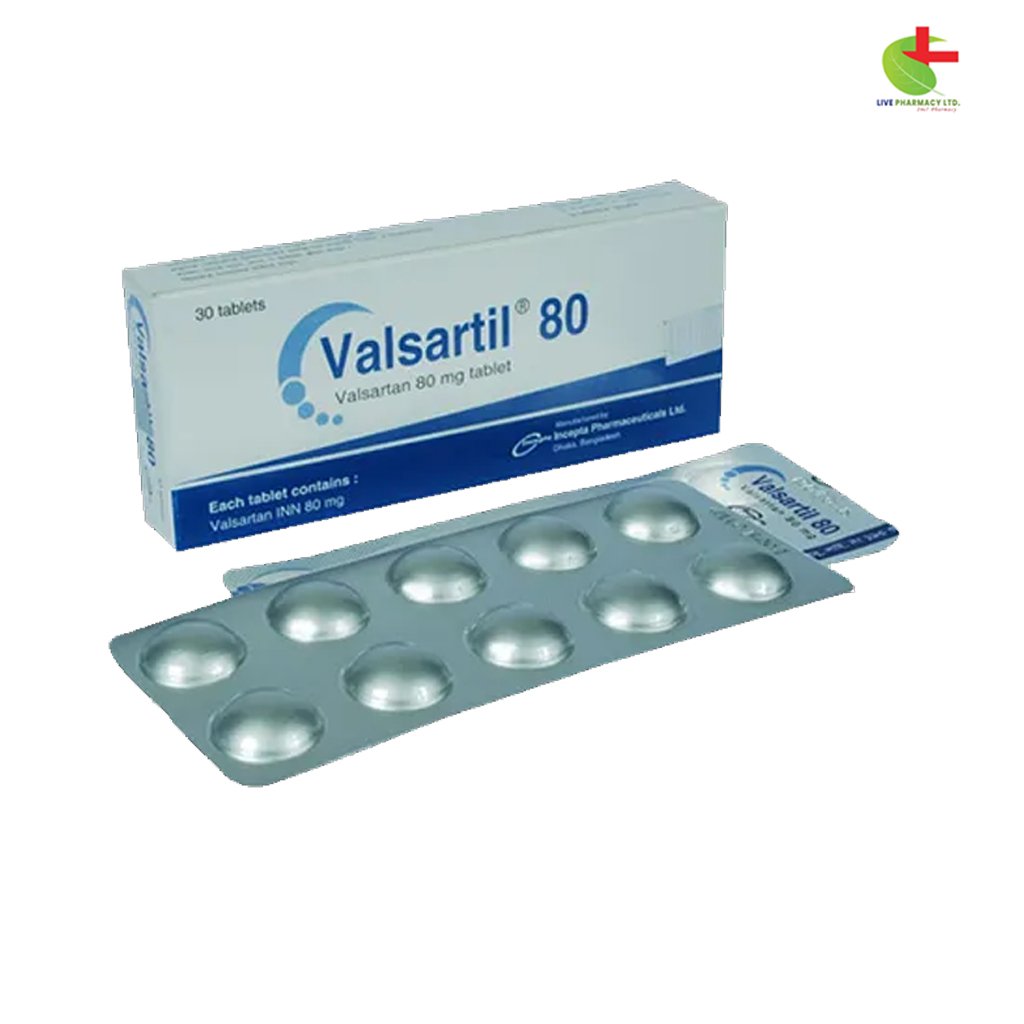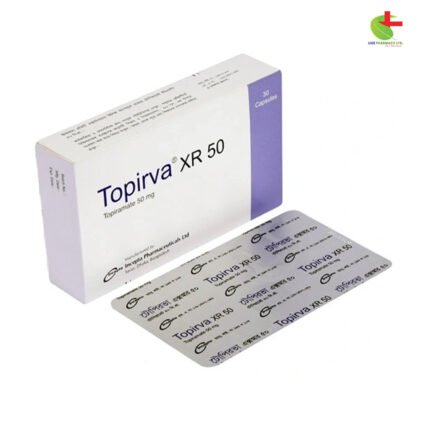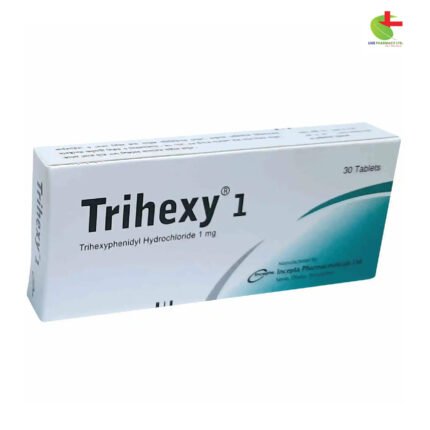Valsartil 80
60.00৳ Strip
- Valsartil is used to manage hypertension, reduce hospitalizations in heart failure patients, and lower mortality in post-myocardial infarction heart failure.
- It is an angiotensin II receptor blocker (ARB) that dilates blood vessels to reduce blood pressure without affecting heart rate.
- Always follow a healthcare provider’s guidance for dosage and administration.
 Brand
Brand
|
Incepta Pharmaceuticals Ltd |
|---|---|
 Generics
Generics
|
Valsartan |
 Type
Type
|
Tablet |
Indications
Valsartil is primarily prescribed for:
- Managing hypertension (high blood pressure).
- Reducing hospitalizations due to congestive heart failure.
- Lowering mortality rates in patients who develop heart failure after a myocardial infarction.
Always follow a registered healthcare provider’s guidance when using this medication.
Pharmacology
Valsartil contains Valsartan, a drug from the angiotensin receptor blocker (ARB) class. It works by inhibiting the effects of angiotensin II, a hormone that causes blood vessels to constrict, raising blood pressure. By blocking these receptors, Valsartil helps to dilate blood vessels, reducing blood pressure without affecting heart rate. This medication is highly selective for the AT1 receptor, ensuring targeted effects without influencing other cardiovascular-regulating channels.
Dosage
- Hypertension: Start with 80-160 mg once daily. The maximum dose is 320 mg daily, with optimal blood pressure reduction achieved within 4 weeks.
- Heart Failure: The initial dose is 40 mg twice daily, which can be increased to 80-160 mg twice daily based on response.
- Post-Myocardial Infarction: Begin with 20 mg twice daily and gradually increase up to 160 mg daily if well tolerated.
Consult your healthcare provider for personalized dosage instructions.
Administration
For optimal absorption, Valsartil should be taken on an empty stomach as food can reduce its absorption by about 40%. No dosage adjustment is required for elderly patients with mild to moderate renal or hepatic insufficiency.
Drug Interactions
Valsartil is not metabolized significantly by the cytochrome P450 system, meaning it is unlikely to interact with drugs that affect this system. However, caution should be exercised when using potassium-sparing diuretics (e.g., Spironolactone), potassium supplements, or salt substitutes containing potassium, as they may lead to elevated potassium levels in the blood.
Contraindications
Do not use Valsartil if you are allergic to Valsartan or any of its ingredients.
Common Side Effects
While Valsartil is generally well tolerated, some users may experience:
- Headache, dizziness, and fatigue
- Abdominal discomfort, nausea, diarrhea, and cough
- Hyperkalemia (high potassium)
- Reduced kidney function, muscle cramps, and skin rashes
Hypotension may also occur, especially if the patient has been on diuretics.
Pregnancy & Lactation
- Pregnancy: Valsartil is contraindicated during pregnancy, particularly in the second and third trimesters, as it can harm the fetus. It should be discontinued immediately if pregnancy is detected.
- Lactation: It is unclear whether Valsartil passes into breast milk, so a decision to either stop nursing or discontinue the drug should be made in consultation with a healthcare provider.
Precautions & Warnings
- Hepatic Impairment: Patients with mild to moderate liver impairment should exercise caution when taking Valsartil, as it is primarily excreted via bile.
- Renal Impairment: Dosage adjustments may be necessary for those with kidney issues.
- Heart Failure & Myocardial Infarction: Close monitoring is essential when initiating treatment in these patients.
Use in Special Populations
- Pediatric Use: Safety and effectiveness in children have not been established.
- Geriatric Use: No significant differences in safety or efficacy were observed in elderly patients, though individual sensitivity may vary.
- Hepatic Impairment:
- For mild to moderate liver impairment: Maximum dose is 80 mg once daily.
- Severe hepatic impairment: Contraindicated.
Overdose Effects
In case of overdose, Valsartil may cause hypotension and tachycardia. If excessive hypotension occurs, patients should be placed in a supine position and treated with an intravenous saline infusion.
Therapeutic Class
Valsartil belongs to the Angiotensin II receptor blockers (ARBs) class of medications.
Storage Conditions
Store Valsartil in a cool, dry place (15-30°C). Protect it from moisture and heat to preserve its efficacy.













Reviews
There are no reviews yet.